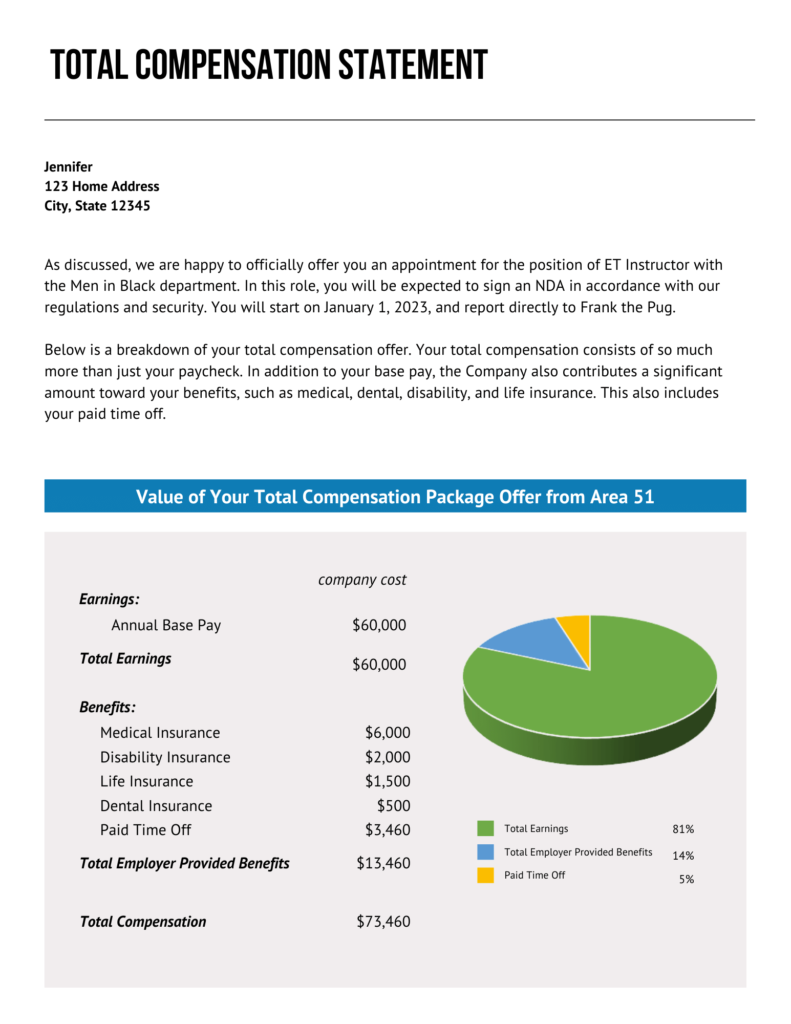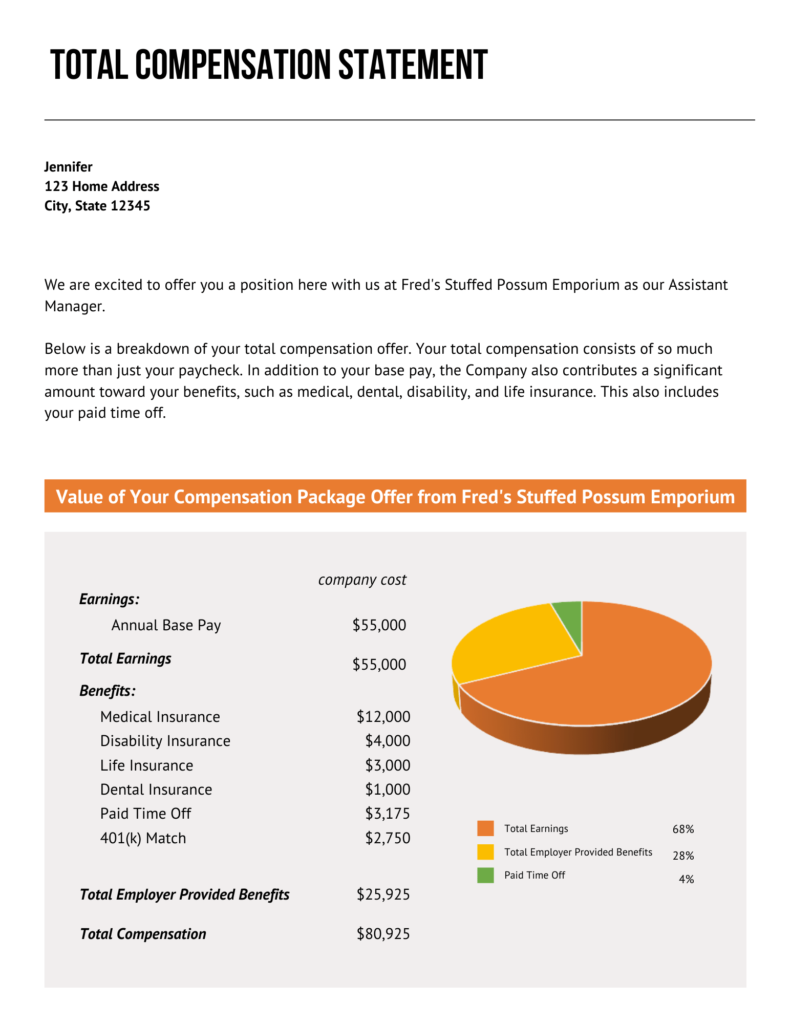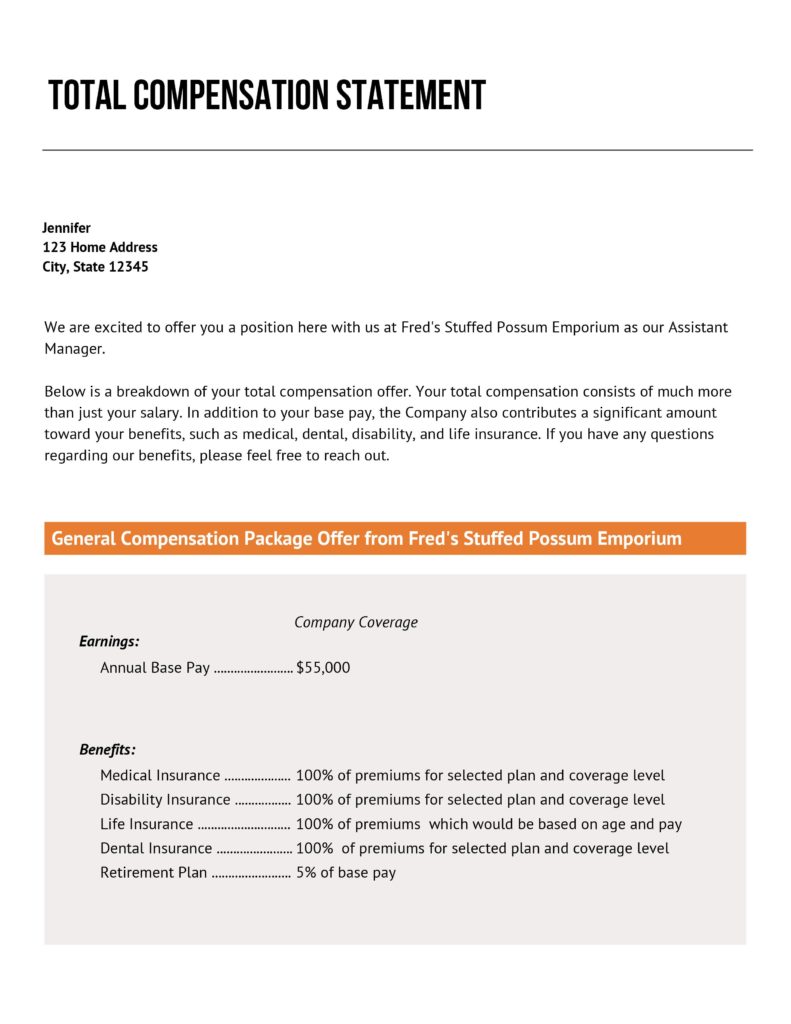The Biggest Misunderstanding About Employee Compensation and How to Fix It
May 18, 2022|Francis Fraine

Bottom Line Up Front
- Your employee compensation package may not be getting the due diligence it should.
- Many are hyper-focused on the amount of their salary and never learn the total cost of their benefits.
- Employers can use a Total Compensation Statement to communicate what they provide beyond base pay.
Even though you have put together a comprehensive (and pricey) benefits package, your employees might not know or understand the total value of what you offer. When looking for a job, most people focus on finding one that pays the highest base pay and completely overlooks the cost of any extra benefits provided.
As a business owner, you know how important it is to offer a competitive employee benefits package and you know how much each benefit costs. But how do you communicate this with potential hires and your current employees?
The Biggest Misunderstanding When it Comes to Employee Compensation
When most employees think about their compensation they think of their base pay and PTO, and then the rest are nice “benefits” to have. They don’t sit and do the math to figure out what their total compensation is. During a job hunt, they don’t realize that a job with a lower base pay may actually have higher total compensation than a job with higher base pay, but lower benefits.
This has become a giant misunderstanding.
For example, let’s say Jennifer gets two job offers:
Offer #1
Area 51 gives her an offer letter with a base pay of $60k, 15 vacation days, comprehensive Medical, Dental, and Life Insurance, disability, and a retirement plan.
Offer #2
Fred’s Stuffed Possum Emporium gives her an offer letter with a base pay of $55k, 15 vacation days, comprehensive Medical, Dental, and Life Insurance, disability, and a retirement plan.
Based on the two offers, it looks like Area 51 is a layup, but their retirement plan is employee contributions only. Also, the insurance plans (which cost a total of $20k) are 50% employee paid.
Fred’s will match 5% of base pay towards the retirement plan and pays 100% of the insurance plans (which for the sake of simplicity, we’ll assume are the same as Area 51’s).
So let’s break down each offer into what everyone understands – dollar bills:
Offer #1 Breakdown
$60k base pay + $10k insurance + $3,460 PTO = $73,460 Total Compensation
Offer #2 Breakdown
$55k base pay + $20k insurance + $2,750 retirement plan match + $3,175 PTO = $80,925 Total Compensation
So if you break it down, Fred’s offer is Jennifer’s best bet for total compensation. Now, whether being around stuffed possums all day would creep her out is another consideration entirely and outside the scope of this article. Yet, without a detailed understanding of the benefits, she would most likely go with Area 51’s offer.
Why Don’t Potential Hires Ask for Clarification on Total Compensation?
Quite frankly, it’s uncomfortable.
Imagine sitting in an office filled with stuffed possums staring at you and having to negotiate with someone you just met. The stuffed possums alone would make most of us feel a little out of our comfort zone, now add in a job interview with a complete stranger.
But the reason isn’t as important as the fact that your candidates, generally, won’t ask so it may be beneficial for all parties if the company takes the lead in laying it out.
What Can Companies Do to Showcase Their Total Compensation Packages?
Explaining it at some point in the interview process is an option, but seeing it on paper or a screen is generally more helpful for people. One thing that companies can do is provide statements that showcase the complete compensation package broken down.
In Jennifer’s case, here’s what the two offers would look like with total compensation statements.
Offer #1 Statement of Compensation

Offer #2 Statement of Compensation

General statements would more likely not show the actual figures and provide links to rate tables for the insurance offerings. For example, Fred’s statement might look like this:

What About Current Employees?
You can issue annual or quarterly statements to show current employees their total compensation, like the examples above. Additionally, some firms have portals that employees can access at any time to see their total compensation.
Are General or Specific Compensation Statements Better?
From an employee’s perspective, a specific compensation statement is more helpful. From a company’s perspective, there are a few considerations to determine which one is best for you. First, there’s a cost associated with the statements. If you do them, there will be labor costs that go into producing these statements. If outsourced, there will be a hard dollar cost, with specific compensation statements costing more than general statements.
Additionally, there is a higher chance of error with specific compensation statements. And without knowing what coverages they may take, it will be impossible to show a potential new hire the exact compensation for insurance.
The Bottom Line
Many potential new hires and current employees don’t have an understanding of what employers offer beyond their base pay. It’s your responsibility to communicate the value of your total compensation package with them. Providing an easy-to-understand Total Compensation Statement may help them see a more holistic picture of the value you are offering.
If you have any questions, we’d be happy to help. You can reach me or another Odyssey consultant by dropping us a message here.

About The Author As Director of Operations at Odyssey Advisors Francis is excited to utilize a decade of industry experience to assist the Odyssey team in developing solutions to client problems in a complete and efficient manner. With a history of observing confusion...
More Insights From This author

May 18, 2022
Francis Fraine

April 30, 2021
Francis Fraine


